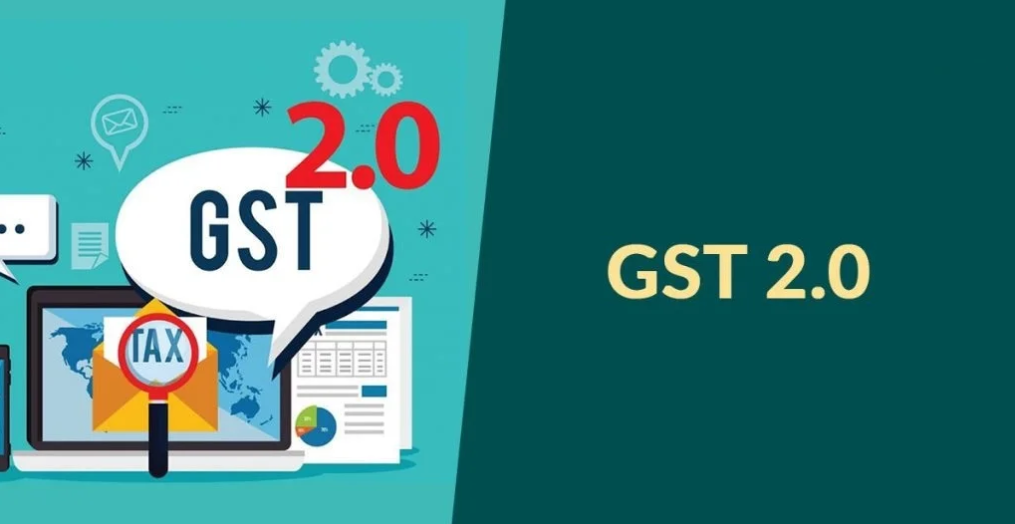Starting 22 September 2025, the Indian government has rolled out “GST 2.0,” a revamped Goods and Services Tax regime designed to simplify the tax structure, reduce pricing, and ease burdens on households, farmers, and businesses. Below are the key changes and what they imply for different sectors:
- Simplified tax slabs + ultra-luxury “sin” goods rate
The GST rate structure is now pared down to just two standard rates: 5% and 18%. This replaces the previous four-rate system (5%, 12%, 18%, 28%). Regular everyday essentials will mostly fall under the 5% (or even zero) rate. However, so-called sin or luxury goods—such as tobacco, soft drinks, high-end vehicles, yachts, or private aircraft—will attract a steep 40% tax. This is meant to both discourage luxury/sin consumption and protect government revenues. - Life insurance becomes GST-free
Premiums on all individual life insurance policies—including term, endowment, and unit-linked plans—are now exempt from GST. Reinsurance arrangements for these policies are also covered by this exemption. The idea is to make financial protection more accessible. - Cheaper essentials and FMCGs
Many everyday items—soaps, toothpaste, shampoos, tableware, bicycles—will now carry only 5% GST. Packaged consumables like sauces, chocolates, coffee, preserved meats, and snacks will also benefit from lowered tax from previous 12%–18% levels. Items such as UHT milk, packaged paneer, and breads may even be taxed at zero or very low rates. Major consumer brands (names like Amul, Nestlé, ITC, etc.) are revising prices downward in light of the changes. - Healthcare & medicines get relief
Life-saving drugs and essential medical products—such as spectacles, diagnostic kits, critical medical supplies—are seeing their GST rates drop (from 12% down to 5% or, in some cases, zero). The govt retains the 5% bracket for some medical items to allow manufacturers to claim input tax credits, which helps with production costs. - Cheaper consumer durables and home electronics
Big-ticket items like TVs above 32 inches, air conditioners, dishwashers etc. will move from the 28% slab to 18%. This should lower costs for consumers and help domestic electronics manufacturing. - Construction/housing materials become more affordable
Building inputs such as cement, marble, granite, and similar supplies will now have lower GST. Examples: previously taxed at 28%, cement is now 18%; materials like marble, granite, sand-lime bricks, etc., taxed 12% earlier, are shifted to 5%. This is expected to stimulate home-building and infrastructure work. - Relief for the auto sector
Vehicles and vehicle parts are seeing tax reductions: two-wheelers up to 350cc, small cars, buses, trucks, three-wheelers, and auto parts will now attract 18% instead of 28%. This should lower purchasing costs and potentially boost domestic auto manufacturing. - Support to agriculture and farmers
Farm machinery, irrigation tools, bio-pesticides, and similar agricultural inputs are now taxed at 5%, down from higher previous rates. Also, things like tires & parts, tractors, poultry and beekeeping equipment all benefit. The idea is to make farming cheaper, more sustainable, and less dependent on costly imports. - Reduced GST on services such as hospitality & wellness
Services including lodging (up to ₹7,500/day), gyms, salons, yoga classes etc., are now in the 5% tax bracket. This aims to make wellness and hospitality more affordable, especially benefitting tourism, local businesses, employment in service sectors. - Price impacts already visible
Even as the reform becomes effective, many fast-moving consumer goods (FMCGs) companies have started cutting MRPs. Specific examples: certain juices, chocolates, biscuits, and essentials have already seen price drops. Non-food items are following suit. These adjustments reflect the tax cuts and are meant to increase purchasing power among consumers.
These changes are intended to lower the cost of living, increase consumption, promote manufacturing (especially “Make in India”-style industries), enhance transparency, and broaden the tax base. They also aim to ensure that essential goods and services become more affordable, while wealthier or luxury consumption pays more.
(Visited 2 times, 1 visits today)


